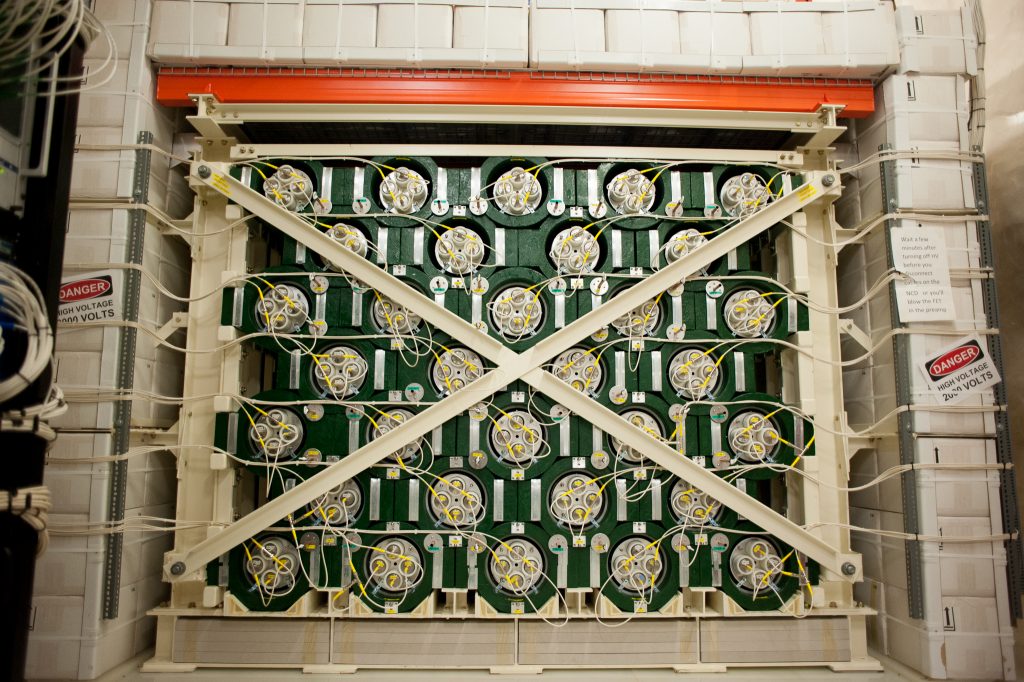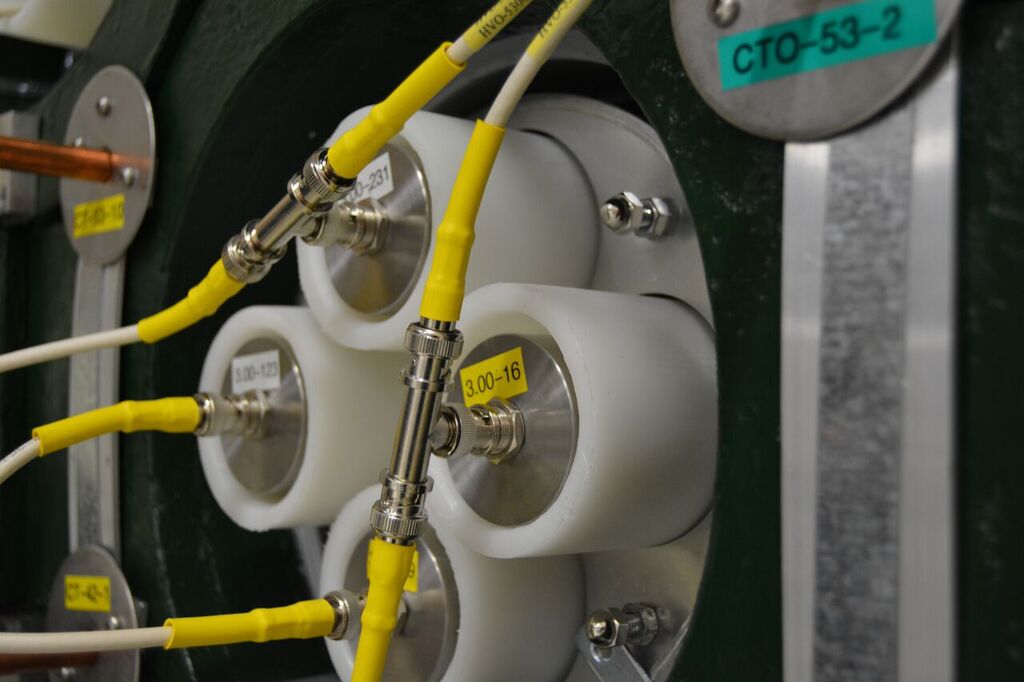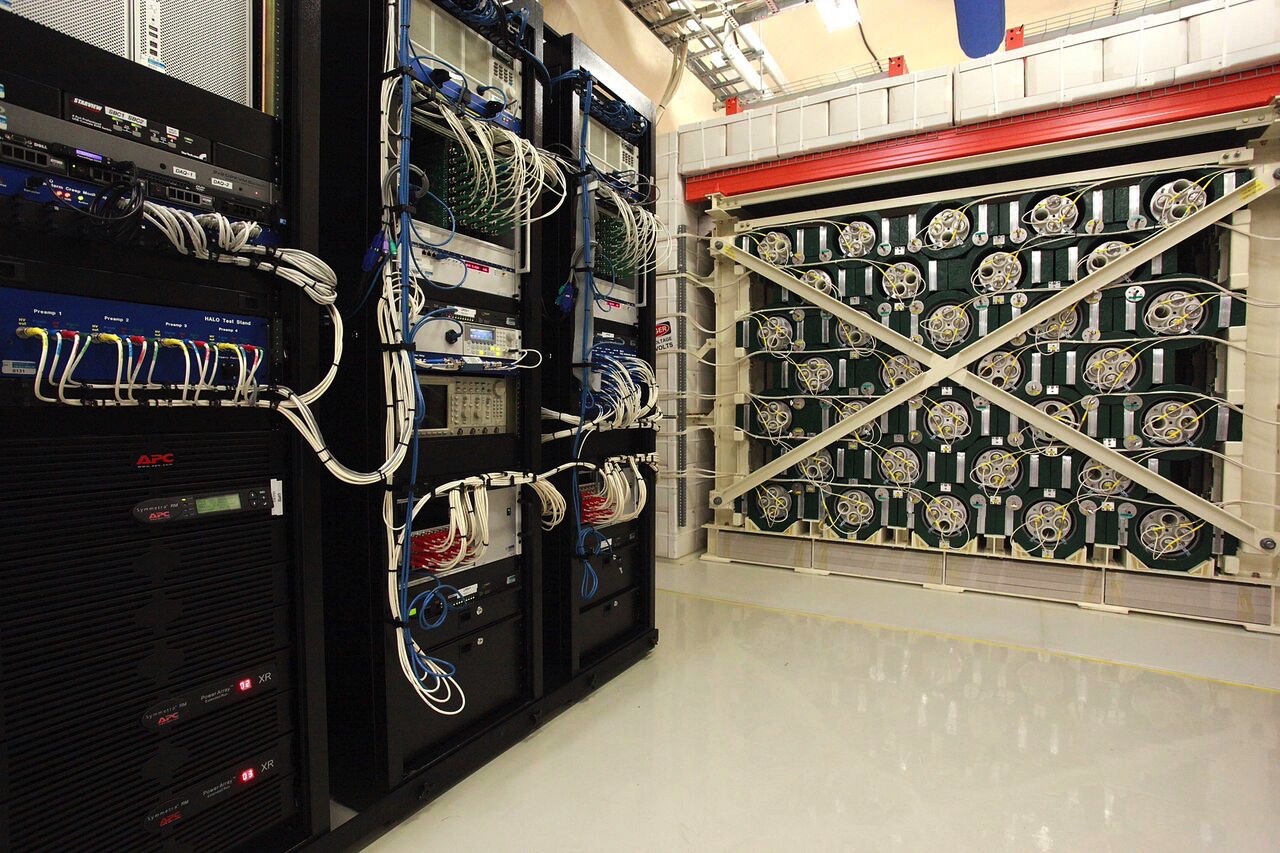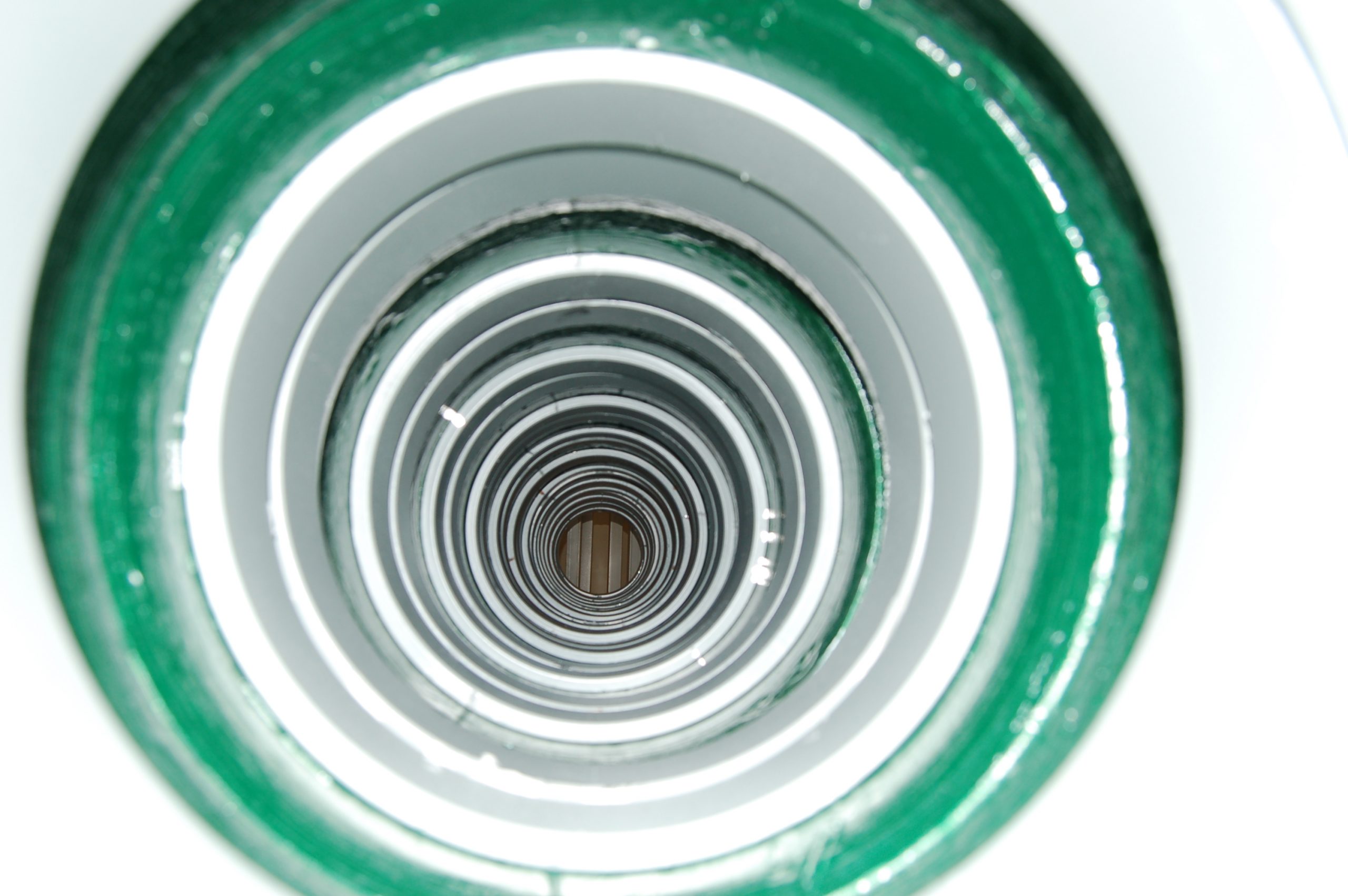
Neutrinos
HALO (the helium and lead observatory) uses lead blocks and helium to detect neutrinos. When a neutrino hits lead, it creates neutrons. These neutrons are then recorded by the helium neutron detectors in HALO, creating a signal in the data.
Did you know?
- HALO is part of SNEWS (the supernova early-warning system), a group of detectors around the world that alert astronomers to supernovae so they can view them with telescopes.
- The lead in HALO came from a cosmic ray experiment at Chalk River Laboratory.
- Most supernova neutrino detectors are only sensitive to one flavour of neutrinos, but HALO is sensitive to all three (elecron, muon, and tau).



